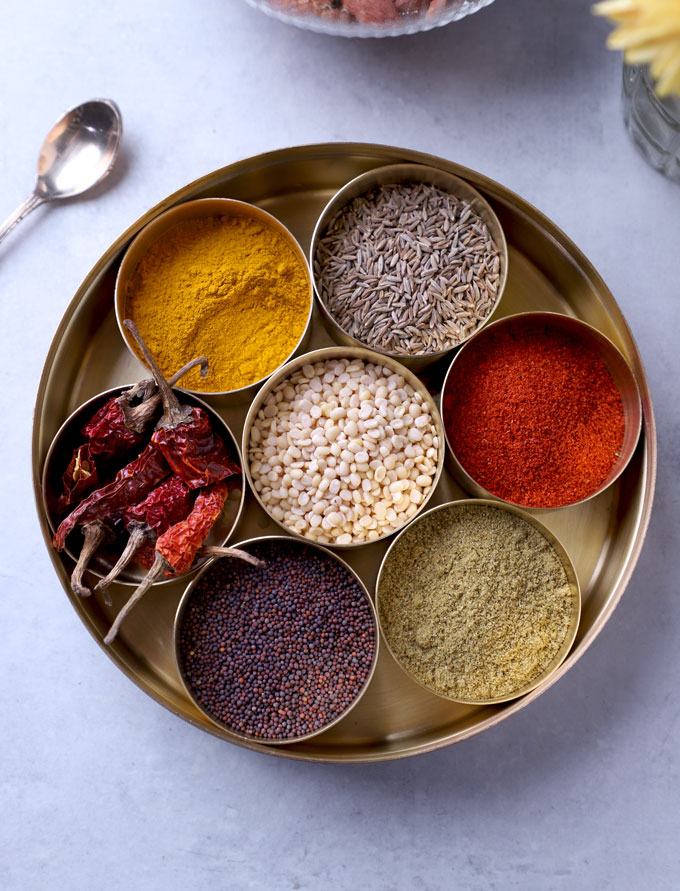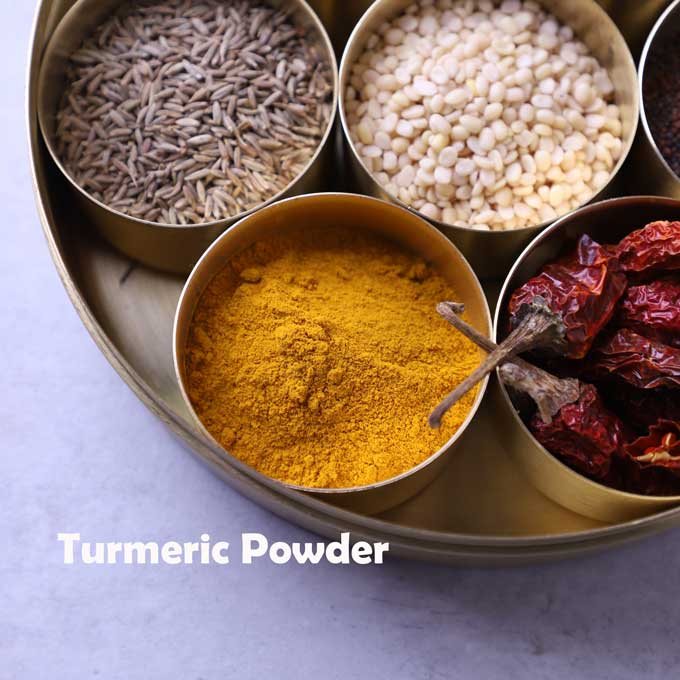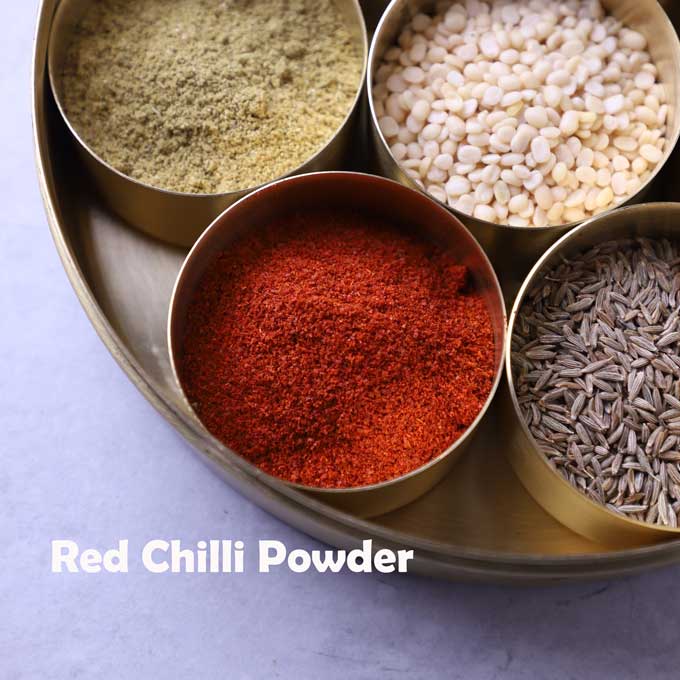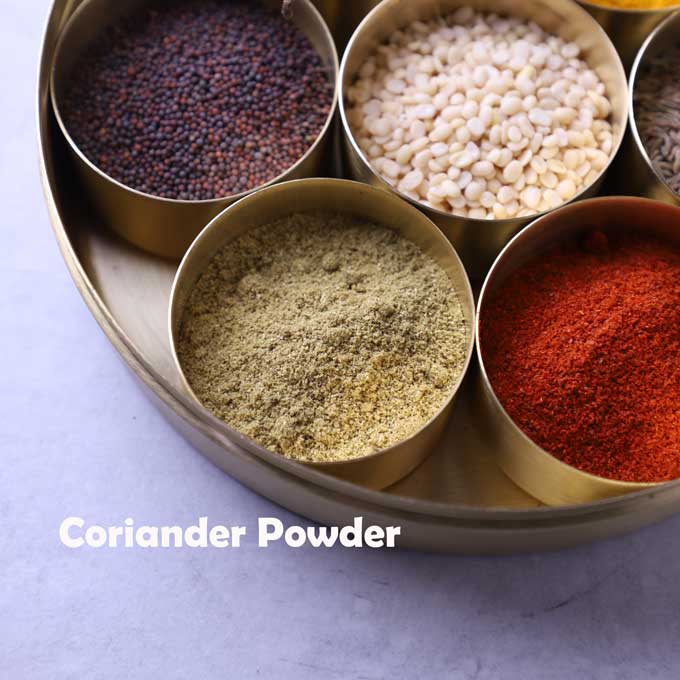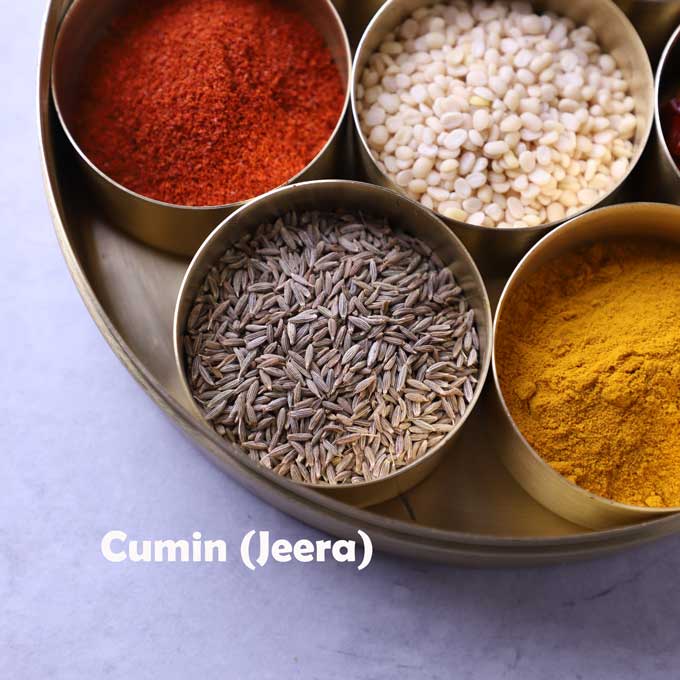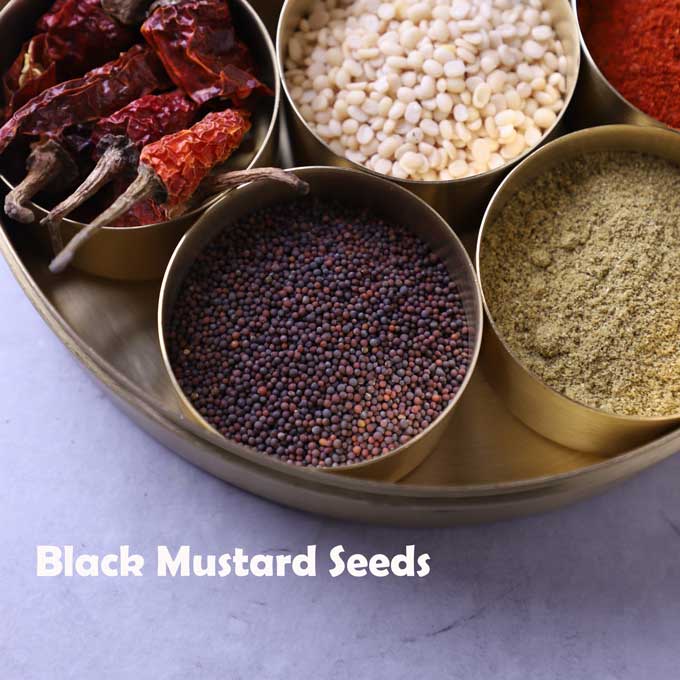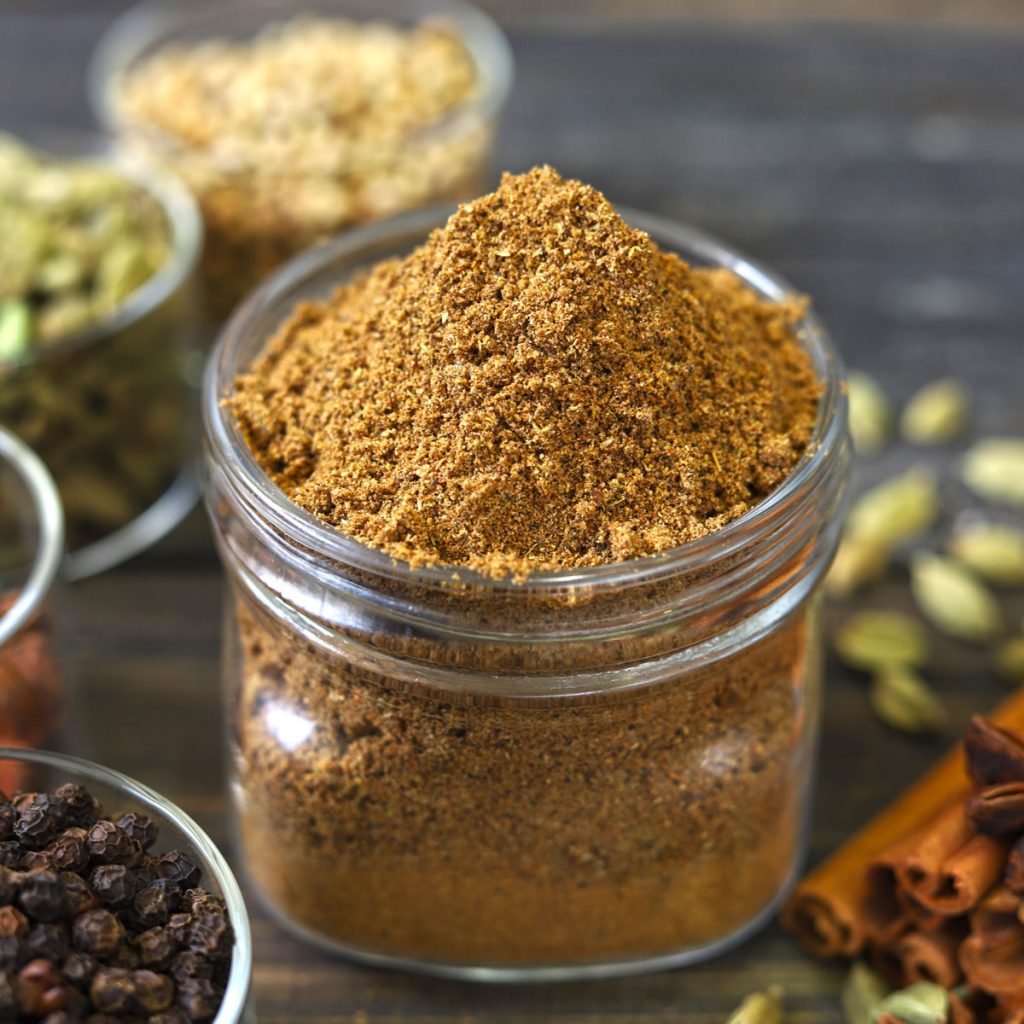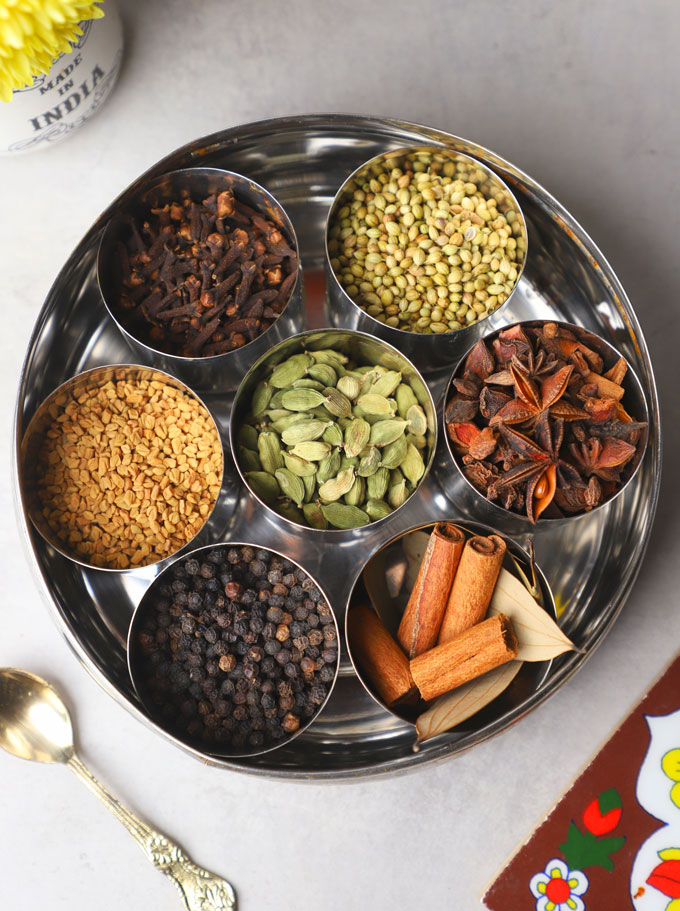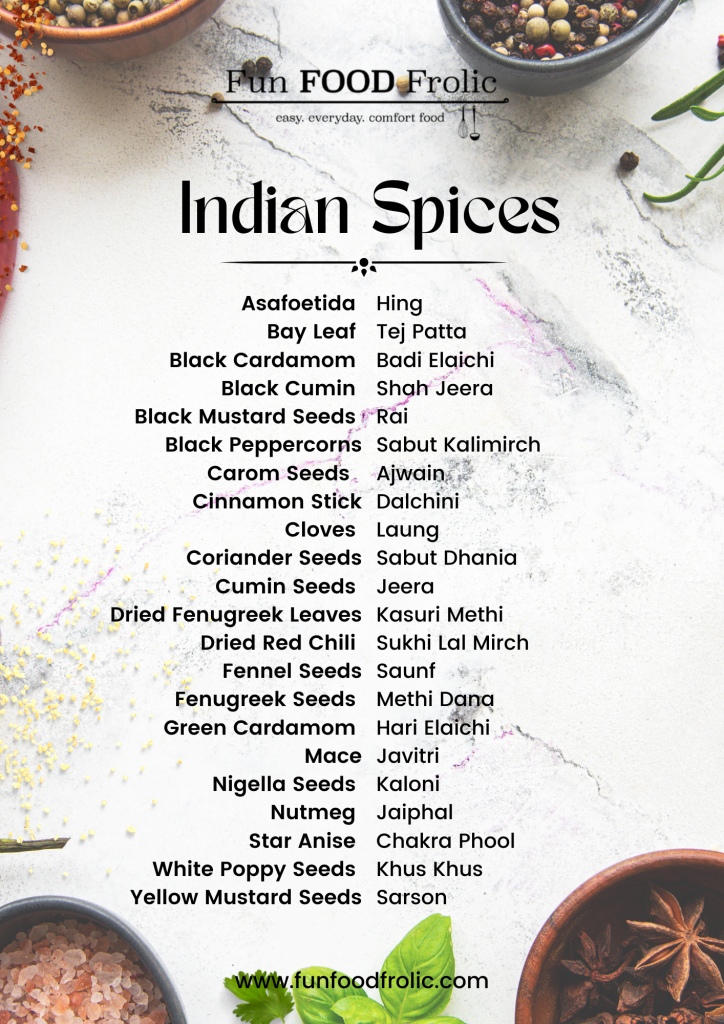Estimated reading time: 6 minutes Every region, household, and even individual cook has slight variations in their essential spices, but certain staples are ubiquitous. Here is a spice box guide to help you learn about essential Indian spices and their uses in detail.
Turmeric Powder (Haldi)
Flavour Profile: Warm, earthy, and slightly bitter Culinary Use: Turmeric is known for lending its signature yellow hue to dishes like dal and curry.
Red Chili Powder (Lal Mirch)
Flavour Profile: Hot, spicy, with varying levels depending on the type of chilli used to make the powder. Culinary Use: Chilli powder adds heat and a vibrant red colour to dishes. It’s used in everything from Indian curries and lentils to vegetable stir-fries.
Coriander Powder (Dhania Powder)
Flavour Profile: Mildly citrusy and earthy Uses: Ground Coriander is a staple in curries and spice blends, contributing a mild flavour that balances stronger spices.
Cumin Seeds (Jeera)
Flavour Profile: Warm, earthy, with a slightly nutty taste Uses: Cumin seeds are often toasted in hot oil for tempering (tadka). They’re used in lentils, curries, and raita. Ground Cumin (powder) is also a commonly used spice in Indian cooking.
Black Mustard Seeds (Rai)
Flavour Profile: Slightly pungent, sharp, and tangy when fried. Uses: These small, black seeds are often added to hot oil to release their flavour. Mustard seeds are common in South Indian cooking like sambar, rasam, lemon rice etc.
Dried Red Chillies (Sookhi Lal Mirch)
Flavour Profile: The main feature of dried red chillies is their heat, which can vary widely depending on the variety. Indian varieties like Kashmiri or Byadgi chillies are milder and add gentle warmth, while others like Guntur and Mathania can be quite hot. Uses: Dried red chillies are commonly used in tempering Indian dishes like Kadhi, Toor Dal, Curd Rice etc. When fried in oil or ghee along with mustard seeds, cumin, and other spices, they release their flavour and infuse the oil, which is poured over dals, curries, and vegetable dishes.
Split White Urad
Flavour Profile: Nutty with a subtle sweet aroma Uses: Added sparingly in tempering South Indian dishes like coconut chutney, coconut rice, upma and so on. Urad Dal needs to be fried in oil/ghee to get the crunchiness.
Garam Masala
Flavour Profile: Aromatic, warm, and slightly sweet with a complex flavour Ingredients: Garam masala is a blend of spices, mainly including cloves, cinnamon, cardamom, cumin, coriander, pepper, and other whole spices. Uses: It is one of the most common seasonings for Indian dishes. Often added at the end of cooking, garam masala enhances the aroma and flavour of the dish. It’s a versatile spice mix used in curries, rice dishes, kebabs, and even in marinades.
follow us on Youtube and Instagram for video recipes.
